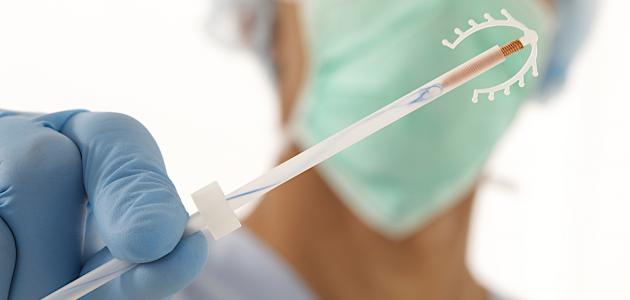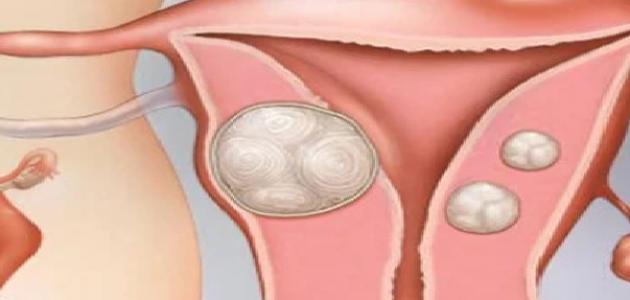IUD damage
Harms or side effects of using an IUD or intrauterine device (in English: Intrauterine Device) include headache, mood swings, in addition to breast sensitivity to pain when touched, and the appearance of acne. in general; The side effects associated with inserting the IUD disappear within a few months, and if they persist and the woman’s condition does not improve, it is necessary to consult a specialist doctor to obtain medical advice and take the necessary measures. We present below an illustrative statement of some of the possible harms and other side effects after inserting the IUD:
Changes in the menstrual cycle
When using IUDs, the majority of women notice some disturbances related to their menstrual cycle, and the changes that occur when using each type of IUD are represented by the following:
- Hormonal IUD: In the first months of inserting the hormonal IUD, some women may notice light bleeding spots of blood, perhaps repeatedly, and this usually occurs between the third and sixth months of insertion. By the sixth month, 95% of women will have a regular menstrual cycle and light bleeding, while the bleeding will stop. Menstruation and bleeding completely in some of them. It should be noted here that these cases of menopause are harmless to the body and do not cause concern.
- Copper IUD: It is possible for the menstrual cycle to change if a copper IUD is used, to last longer than usual for a woman. Menstrual bleeding may also be more heavy and frequent than usual, and accompanied by pain, especially in the first months of its insertion, after which the bleeding stabilizes and the cycle becomes regular, depending on the amount of bleeding. Usually, before the IUD is inserted.
Read also:Causes of polycystic ovary syndrome and its treatment
Pain and discomfort
During the insertion of the IUD, some women may feel pain similar to severe menstrual pain. It is worth saying that the duration of feeling this pain is very short, and may only last for less than a minute, so that the woman can enjoy an effective birth control system for many years. Also, the menstrual cycle after the insertion of the hormonal IUD becomes longer with time. Less bleeding and less pain, as mentioned previously.
Overweight
Some women report that they notice some increase in their weight after installing the hormonal IUD, and in fact; The studies conducted regarding the cause of weight gain in some women after insertion of the IUD are insufficient, so it is difficult to say definitively why this occurs. It is worth noting that the weight gain, even if it occurs as a result of using the hormonal IUD, is not due to an increase in body fat, and it can To say that what may have actually happened is that the hormone contained in the IUD causes increased water retention inside the body and bloating; It temporarily increases a woman's weight slightly, and it is noteworthy that this condition is somewhat similar to what happens during the menstrual cycle, and three months after the IUD is inserted; The body gets used to the hormone and its effect on weight gain usually disappears.
infection
There is a small possibility that a woman will become infected in the first three weeks after inserting the IUD, and it is important to be careful to prevent exposure to sexually transmitted diseases (STD's). A very important matter; It is one of the types of infections that target the pelvic area, and may cause women to have reproductive problems. It is also noted that there are relatively rare cases of women who may suffer from an allergic reaction when inserting a copper IUD.
Read also:Accelerate the menstrual cycle
The IUD falls out of its place
It is unlikely that the IUD will fall out of its place after insertion. Out of every 10 cases of use of the IUD, there is only one case that may suffer from the IUD falling out or exploding outside the uterus, and this mostly happens in the first weeks of its installation. In fact, When the IUD is inserted, the supervising doctor or nurse guides the woman on how to ensure that the IUD remains in the correct position, as the IUD includes two thin threads, a small part of which dangles outside the uterus, reaching the upper part of the vagina, which allows the woman to feel their presence and ensure that the IUD remains in place. Its position. It is recommended to check the position of the IUD repeatedly in the first month of its installation, and periodically or after each menstrual cycle in the following months.
Damage is rare
There are a number of more serious side effects and side effects, which are considered rare, and we list them in the following points:
- Pelvic Inflammatory Disease (PID), which occurs if bacteria reach the uterus when the IUD is inserted.
- Uterine perforation, which is a condition in which the IUD causes a breach or hole in the wall of the uterus, leading to severe bleeding and infection of the woman. It should be noted that this condition is rare, as out of every thousand women who uses it IUD; There is only one case of perforation in the uterus, and the IUD is removed immediately.
Read also:Breast augmentation methods
Pregnancy on the IUD
The IUD can become pregnant; There is a small possibility of pregnancy not exceeding 1% despite the presence of a hormonal IUD, and the pregnancy may continue normally, but the woman must consult a doctor to ensure the health of the pregnancy and monitor its development. The possibility of an ectopic pregnancy or ectopic pregnancy occurring in the case of an IUD pregnancy is higher compared to the normal situation, and in this context; It is noteworthy that an ectopic pregnancy is defined as the case of the implantation of the fertilized egg in a place outside the uterus, most often in the fallopian tube. Here it should be noted that using the IUD during pregnancy or keeping it in the event of pregnancy may lead to serious health problems. Such as severe infection, miscarriage, premature birth of the fetus, and in the worst cases; It may cause a great risk to the mother's health, so the specialist doctor must be informed immediately after pregnancy of the presence of the IUD.
IUD removal
The IUD can be removed at any time the woman wishes to do so, and it must be removed by a specialist doctor, as pregnancy becomes possible immediately after that. Here it must be noted that other available contraceptive methods, such as condoms, must be used for a period of time. Seven days before the IUD is removed; This is in the event that the woman does not want to become pregnant after removing the IUD, and does not want to have another IUD inserted after that.
Warnings of using an IUD
As mentioned earlier; The IUD is one of the good options for birth control and contraception, but there are some cases in which it is recommended to use another method of contraception instead, including the following:
- Pregnancy, or the possibility of pregnancy.
- The presence of problems or imbalances in the structure of the uterus, such as uterine diseases or deformities, in addition to cases of women suffering from abnormal bleeding.
- Pelvic inflammatory disease.
- Current infection with a sexually transmitted disease (STD's).
doctor review
There are a number of unusual symptoms and signs that may accompany a woman’s use of an IUD, and their appearance requires a visit to a specialist doctor, including:
- Unusual bleeding.
- Delayed menstrual period.
- The occurrence of foul-smelling secretions.
- Feeling severe cramps.
- Having a fever, with no clear cause.









